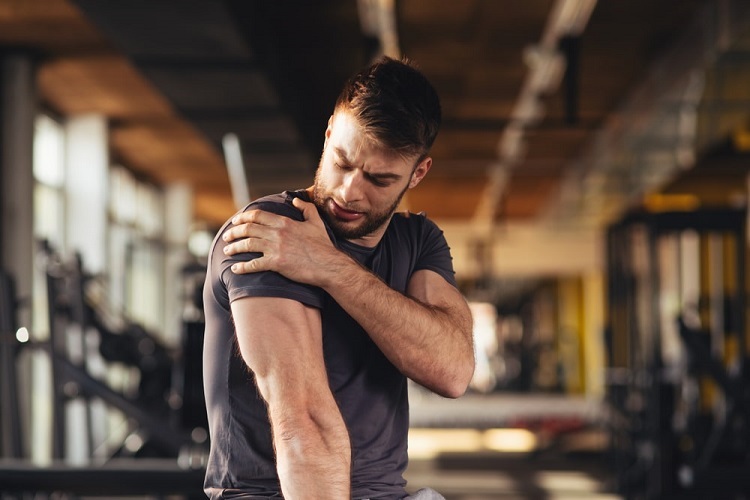Whether you work out on a regular basis or only occasionally, muscle pain is unavoidable. But so long as you don’t stretch your limits, muscle pain is actually a good thing! It means that your muscles are expanding and growing stronger so the next time you start to get that familiar soreness, you’ll feel better knowing that you’re making a lot of progress.
Still, nobody wants to be feeling that pain all day. So here are some ways you can prevent or lessen muscle pain before your exercise and relieve it after your workout.
Table of Contents
Before Your Workout
1. Warm up properly
Every fitness instructor out there can’t stress enough how important a good and proper warm-up is before you start your workout. Warm-ups help your body to get up to the right temperature, get your muscles ‘awake’ and moving, and slowly raise your heart rate so you don’t strain yourself or your poor heart. A good stretch can improve your flexibility and range of motion and greatly reduces the risk of injury or cramping, as well as any soreness later on. If there’s any step in your workout routine that you shouldn’t skip, it’s your warm-up.
2. Stay hydrated
Dehydration is the enemy of everyone, especially in a workout. Right before you go running or hit the gym, have a generous fill of water, and don’t forget to bring a full water bottle as well. Whenever you start to feel thirsty or exhausted, don’t push yourself and make sure to drink as much as you can.
3. Take a dip in a hot tub
Believe it or not, having a soak in a relaxing hot tub can actually help before your workout! The hot water helps with blood flow and circulation and loosens up your muscles, allowing for more flexibility and stretch. Just don’t stay in it for too long as it can also cause dehydration. Just be sure to limit your time in it and drink a lot of water afterward.
4. Use a foam roller
To relieve any addiitonal tension in your muscles, you can try foam rolling. It’s fairly easy to incorporate it into your warm up and cool down routines and is a relaxing way to relieve pain afterward. Think of it as a massage almost.
5. Don’t go beyond your limits
This should actually be done during your workout but it’s important to remind yourself before you start not to go beyond what you’re capable of doing. If you feel yourself getting tired or feel like you can’t do any more push-ups, sit-ups or what have you, don’t push it. Testing your abilities is all well and good but overexerting yourself is just inviting more pain than necessary.
After Your Workout
1. Cool down
Cool downs are just as important as warm-ups. As the name implies, a cool-down exercise helps your muscles to relax and your heart to go back to a regular rate after an intense workout. If you don’t cool down, your muscles could stiffen or worse, cramp up. Slowly ‘cool down’ your muscles by doing easy stretches and relatively gentle exercises. Don’t move too fast — gradually ease your body down from its high till your heartbeat and temperature has calmed down.
2. Get a massage
A massage directly after your workout can greatly relieve any pain or soreness in your muscles and can even speed up or improve recovery if you’re healing from a sports injury or anything of the like. It’s helpful, it’s relaxing — who would ever say no to a massage?
3. Get in that hot tub again
A hot bath, rather than an ice-cold dip, has been found to be very helpful post-workout. Heat can help circulate blood towards your muscles to relieve any tension and pain there. This should come with a bit of warning though. You shouldn’t jump right into a hot tub immediately after your workout. Wait at least 2 days and if the soreness persists, then you can try a hot bath. As was mentioned, a hot bath can dehydrate your body, and having one right after a workout could do more harm than good.
4. Rest
Don’t underestimate the power of a good rest. You just had an intense workout. Give yourself a break! You deserve it. Give your body time to recover and replenish its energy supply in between workouts. It’s probably not a good idea to have another heavy workout a day after the first one, especially if your muscles are still sore.
What you can do instead is to wait until the soreness has passed and then maybe wait one day more before you hit the gym again and do another intense routine. If you want to exercise regularly, do a lighter exercise in between your intensive ones and as always, try not to push yourself.
Muscle soreness is natural and there’s just no surefire way to completely avoid it, unless your body has grown so used to it that it hardly feels like anything anymore. The key to reducing the pain is simply knowing how to pace yourself and not pushing the limits of your capabilities. Remember to always stay hydrated and don’t let the fear of pain get in the way of your fitness goals.
Meta title; Relieving Muscle Pain Before and After a Workout
meta desc: Muscle pain after a workout can be tough and maybe even annoying. Read on and discover some effective ways to reduce the pain before and after a workout.




